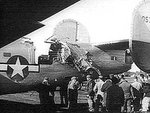Navigation
Install the app
How to install the app on iOS
Follow along with the video below to see how to install our site as a web app on your home screen.
Note: This feature may not be available in some browsers.
More options
You are using an out of date browser. It may not display this or other websites correctly.
You should upgrade or use an alternative browser.
You should upgrade or use an alternative browser.
Battle Damaged Aircraft of WW2
- Thread starter beaupower32
- Start date
Ad: This forum contains affiliate links to products on Amazon and eBay. More information in Terms and rules
More options
Who Replied?Airframes
Benevolens Magister
Agree there Chris. If the shells impacted and exploded under the skin, then that would account for the varied angles of the punctures, appearing as what I thought might be splinter holes, some of which might even be from 'chunks' of the Stirlings' structure disintegrating and blowing outwards.
And they wanted to get rid of this plane? They should build more of them!
GrauGeist
Generalfeldmarschall zur Luftschiff Abteilung
I know that B-52 isn't from WWII, but dang if that doesn't look like a B-17 dragging it's carcass back to England...
Glider
Major
You can only wonnder at the skill involved in landing a plane in that condition. Just lining up for the runway must be a nightmare. You can see the aircraft is fully loaded with some sort of RPV under the wing which wouldn't have helped.
Anyone any idea as to what happened, the only thing I can think of is a mid air.
Anyone any idea as to what happened, the only thing I can think of is a mid air.
GrauGeist
Generalfeldmarschall zur Luftschiff Abteilung
You think it's possible that a SAM scored a near miss?...Anyone any idea as to what happened, the only thing I can think of is a mid air.
That vert stab looks a little jagged like something tore it up from above/behind...
Glider
Major
Certainly could be. I was looking at the lack of any other damage. Also the paint job didn't strike me as being a front line scheme. I haven't seen such a large light stripe down the middle before.
I must stress that I am only guessing.
I must stress that I am only guessing.
Could be a collision but it doesn't look like it. Still an impressive feat of pilot skill to get that one down.
GrauGeist
Generalfeldmarschall zur Luftschiff Abteilung
Did a little digging, and found out the story behind that particular B-52:
I also read that the pilot lowered the gear while inflight to help stabilize the craft...here's another view:
January 10, 1964, started out as a typical day for the flight test group at Boeing's Wichita plant. Pilot Chuck Fisher took off in a B-52H with a three-man Boeing crew, flying a low-level profile to obtain structural data.
Over Colorado, cruising 500 feet above the mountainous terrain, the B-52 encountered some turbulence. Fisher climbed to 14,300 feet looking for smoother air. At this point the typical day ended. The bomber flew into clear-air turbulence. It felt as if the plane had been placed in a giant high-speed elevator, shoved up and down, and hit by a heavy blow on its right side.
Fisher told the crew to prepare to abandon the plane. He slowed the aircraft and dropped to about 5,000 feet to make it easier to bail out. But then Fisher regained some control. He climbed slowly to 16,000 feet to put some safety room between the plane and the ground. He informed Wichita about what was happening. Although control was difficult, Fisher said he believed he could get the plane back in one piece.
Response to the situation at Wichita, and elsewhere, was immediate. An emergency control center was set up in the office of Wichita's director of flight test. Key Boeing engineers and other specialists were summoned to provide their expertise. Federal Aviation Administration air traffic control centers at Denver and Kansas City cleared the air around the troubled plane. A Strategic Air Command B-52 in the area maintained radio contact with the crew of the Wichita B-52.
As Fisher got closer to Wichita, a Boeing chase plane flew up to meet him and to visually report the damage. When Dale Felix, flying an F-100 fighter, came alongside Fisher's B-52, he couldn't believe what he saw: The B-52's vertical tail was gone.
Felix broke the news to Fisher and those gathered in the control center. There was no panic. Everyone on the plane and in the control center knew they could be called upon at any time for just such a situation. In the emergency control center, the engineers began making calculations and suggesting the best way to get the plane down safely. The Air Force was also lending assistance. A B-52, just taking off for a routine flight, was used to test the various flight configurations suggested by the specialists before Fisher had to try them.
As high gusty winds rolled into Wichita, the decision was made to divert the B-52 to Blytheville Air Force Base in Northeastern Arkansas. Boeing specialists from the emergency control center took off in a KC-135 and accompanied Fisher to Blytheville, serving as an airborne control center.
Six hours after the incident first occurred, Fisher and his crew brought in the damaged B-52 for a safe landing.
"I'm very proud of this crew and this airplane," Fisher said. "Also we had a lot people helping us, and we're very thankful for that." The B-52, Fisher said, "Is the finest airplane I ever flew."
I also read that the pilot lowered the gear while inflight to help stabilize the craft...here's another view:
Attachments
Njaco
The Pop-Tart Whisperer
Holy cr@p!!!!!
WJPearce
Airman 1st Class
GrauGeist
Generalfeldmarschall zur Luftschiff Abteilung
Lucky crew on that B-24...from the looks of it, the shell didn't detonate, but passed straight through it...had the flak shell burst, the damage would have been real ugly considering where it entered...
Gentlemen,
My apologies for straying OT - in my excitement I clean forgot this is WW 2 Aircraft.net !
However, they are still amazing pictures of stricken aircraft, are they not ?
The jury are still out regarding the pic of the P-38 with the Halifax III fin wedged in the wing. Nobody has yet managed to ID the latter, which must have been seriously damaged irrespective of where the MAC took place, and therefore recorded in RAF documents at the time.
There are also pictures of an Italy-based B-24 which DID have an 88mm shell explode in the upper fuselage, blowing off much of the upper fuselage skinning and killing one (or two, reports differ) of the crew.
Many thanks for sharing the last two.
Regs,
BC
My apologies for straying OT - in my excitement I clean forgot this is WW 2 Aircraft.net !
However, they are still amazing pictures of stricken aircraft, are they not ?
The jury are still out regarding the pic of the P-38 with the Halifax III fin wedged in the wing. Nobody has yet managed to ID the latter, which must have been seriously damaged irrespective of where the MAC took place, and therefore recorded in RAF documents at the time.
There are also pictures of an Italy-based B-24 which DID have an 88mm shell explode in the upper fuselage, blowing off much of the upper fuselage skinning and killing one (or two, reports differ) of the crew.
Many thanks for sharing the last two.
Regs,
BC
Attachments
Quite a story. Thanks for sharing.
Nice shots everyone.
Nice shots everyone.
imalko
Chief Master Sergeant
Haven't posted to this thread for a while, so here's one picture...
Rotnik Peter Chebeň inspecting damage to his Il-2 which was hit by a flak during a combat sortie. Despite heavy damage on the wing pilot managed safely to return to base. Picture taken at airfield Poremba in April 1945.
Source: "Slovenske letectvo 1939-1945" Volume 3
Rotnik Peter Chebeň inspecting damage to his Il-2 which was hit by a flak during a combat sortie. Despite heavy damage on the wing pilot managed safely to return to base. Picture taken at airfield Poremba in April 1945.
Source: "Slovenske letectvo 1939-1945" Volume 3
Attachments
That some impressive damage Igor, bet that would of been a real handful to fly.
Users who are viewing this thread
Total: 1 (members: 0, guests: 1)

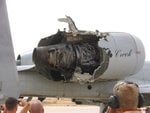
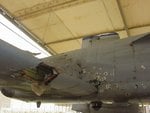
![[001304]_1.jpg](/forum/data/attachments/142/142090-ced1fa80d22fcd7fde8a28bc171681e8.jpg)
![[001293]_1.jpg](/forum/data/attachments/142/142091-2fd4a86a17ce86aff70bfe700ea9e35b.jpg)
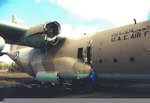
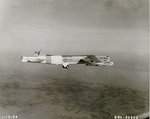
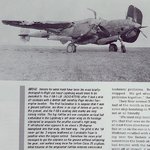
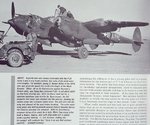
![[000638].jpg](/forum/data/attachments/142/142157-dd192c5a075e8124a7c4c7f1f66c187b.jpg)
![[000316].jpg](/forum/data/attachments/142/142158-c1696efa2679bd0796a7fe47fc47844b.jpg)
